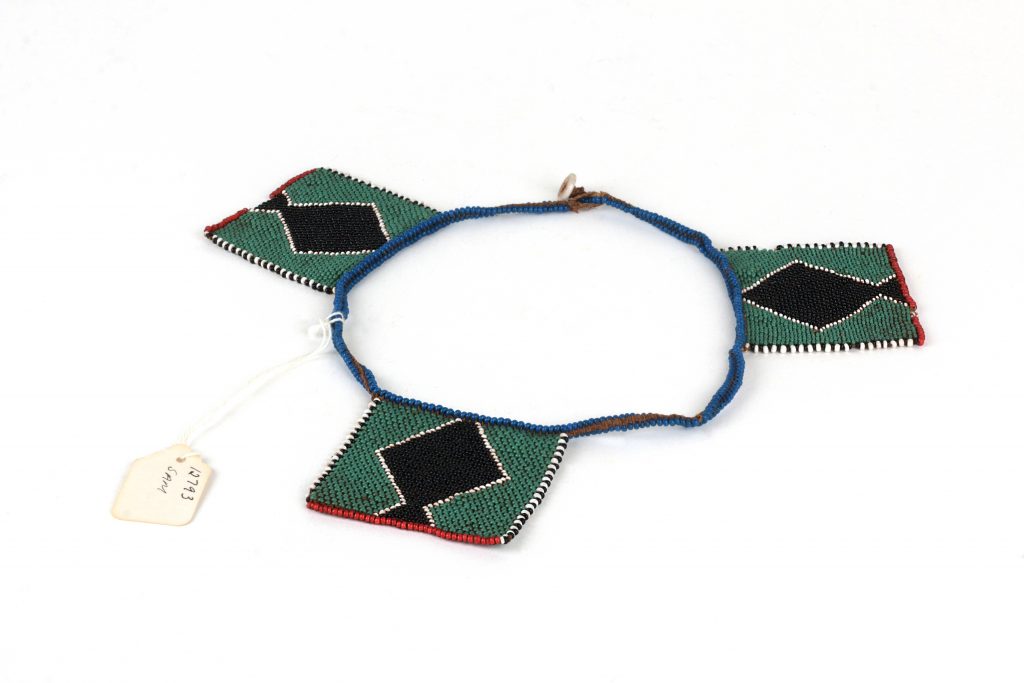
Listen to the pronunciation
| What is this? | Necklace |
| isiZulu Name | Ubuhlalu |
| isiZhosa Name | Not yet documented. |
| English Name | Zulu Love Letter beadwork |
| Which cultural group created this? | Zulu |
| Who made this? | Not yet documented. |
| When was it made? | Not yet documented. |
| Where was it made? | Probably KwaZulu-Natal |
| Measurements | Not yet documented. |
| How was it made and what is it made of? | Beads and vegetable cord. Beadwork. |
| What colour is it? | Beads: green, black, blue, red and white. Cord: brown Button: white |
| What sound does it make? | Not yet documented. |
| Physical description | Necklace made of beads and vegetable fibre. Three beadwork tables around the main bead cord with geometrical forms. One button fastens the necklace. Beads are damaged in some areas. |
| Where is it now? | Iziko Museum, Cape Town, South Africa Museum ID: SAM 12793 Accession no. 3/1990 (?) Store B14/l |
| How did it get there? | Purchased from the estate of Mr. P. Miller, September 1985. |
| Why is it important? | Beaded jewellery necklace, also known as Zulu Love Letter. Beadwork is usually used for ceremonial purposes. For example, they are used during umemulo (a coming of age ceremony for girls). They are also worn by izangoma during ceremonial rites. Traditionally, beads were also used as a form of communication between a woman and a man, mainly during courtship. Different colours and patterns contained different messages. From that use, some pieces of beaded jewellery are known as ‘Zulu love letters.’ The choice of colours and patterns for the beads is different in Zulu, Xhosa and iNdebele traditions. In the Xhosa tradition, blue and white, are the most used colours. The colour white in the Zulu culture represents peace. The colour green is used to profess love during courtship. |
| Notes | Not yet. |
| References | Amagugu Ethu Workshop, Recording STE021, min. 56:11 to 01:00:10: Thulisiwe Mtshali, Mbongeni Nomkhonwana, Wilfred Mchunu and Laura Gibson Amagugu Ethu Workshop Recording STE025 Iziko Museum Catalogue Card SAM 12793 |
| Who described this? | Described during the Amagugu Ethu Workshop by Thulisiwe Mtshali, Mbongeni Nomkhonwana, Wilfred Mchunu and Laura Gibson. Described for the website by Clara Giménez-Delgado (August 21, 2020). |